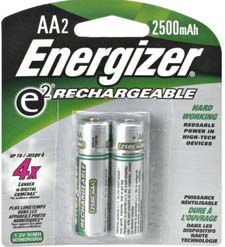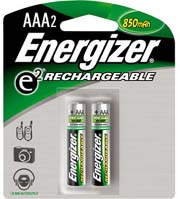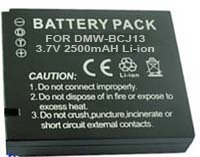 |
Over the
last decade or so solar powered garden and path lights have become quite
popular. However, over the last few years I have seen a gradual decline
in their use. I think one of the reasons for this is a huge drop in
quality for these devices. Chinese manufactures have whittled down their
designs until they just barely work. Devices fail after a few months of
operation, batteries freeze, wires break, solar panels become cloudy and
crack and night time operation becomes shorter and shorter. After several
attempts, I think many home owners have stopped buying these things.
However, I think the basic concept is still viable, if only a device were
designed and built to really work properly.
I have outlined below
some ways to use the guts of an existing path light and turn it into
something that actually works. |
|
|
Design
concepts and considerations
One path light area which has
seen huge a reduction in quality over the years is the solar panel. The latest
trend by the Chinese manufacturers is to install the minimum size and number of
solar cells possible in those solar energy gathering squares as shown by the
examples below. Notice how small the actual solar cell area is relative to the
cover plate. If you really want to improve a path light design, this is one
area to focus on. |
|
|
| There are
many solar path light designs. I would recommend one which has enough room on
the top of the assembly for a square type solar panel at least two inches by two
inches. Some designs have room for even larger panels. Those larger units
might be nice when more light needs to be produced. |
I would
recommend a solar panel with 10 cells. This gives an open voltage of about 5
volts. This voltage is about right for charging a single lithium ion battery
cell or three NiMH
cells. Panels are available which range in size from 4
square inches of area to nearly 16 square inches. Be sure to buy a panel which
nearly fills the square with solar cells. The highest efficiency cells can
produce about 140mw per square inch but most will be closer to 100mw per square
inch. Also, buy panels which use mono-crystalline or poly-crystalline cells.
Don’t buy thin film or amorphous solar cells. Those have much lower
efficiencies. A 10 cell, four square inch panel should be able to pump 80ma of
current into the battery. A 9 square inch panel should crank out 200ma of
current and a monster 16 square inch panel should be able to charge the battery
with 350ma of current. |
|
|
The next
consideration is the battery type. Many of the current path light designs use a
single (nickel metal hydride) NiMH
rechargeable cell. They then install a
voltage boost circuit to convert the 1.2v from the battery into a higher voltage
for the white LED light. I single battery will not store enough energy during
daylight hours to provide a reasonable amount of light through the night. I
think multiple NiMH
cells should be used. NiMH
cells are quite common and are
available in the AAA and AA sizes. AAA cells should have a rating of at least
800ma-hours, while AA cells should be around 2500ma-hours. I would recommend
using a battery holder for the three cells. |
 |
 |
 |
AA 2500maH NiMH
Cells |
AAA 850maH NiMH
Cells |
3 Cell Battery Holder |
| |
|
|
|
The other
battery choice is a single lithium ion rechargeable cell. These are more
expensive but they should work fine for this application. They are the battery
of choice in cell phones, MP3 players and laptop computers. The most common
package is a flat plastic assembly with a capacity ranging from 1000ma-hours to
2000ma-hours. You can easily solder wires onto the end electrodes. A less
common package looks much like a NiMH
AA cylindrical cell. These are offered
in a capacity ranging from 1000ma-hours to 2500ma-hours. |
 |
 |
 |
|
1000maH Lithium Ion Cell |
2500mah Lithium Ion Cell |
1000maH Lithium Ion Cell |
| |
|
|
|
Although
there are some intelligent battery charger circuits available, I think for this
application you can use a constant voltage type interface. The solar panel
itself will limit the charging current, equal to the short circuit current
rating of the panel. I would suggest charging the 3 cell NiMH
battery pack at
about 4 volts and the lithium battery at 4.2v. I would also suggest keeping the
charge current limited to about C/5, where C is the battery milliamp-hour
capacity. An 800ma-hour AAA battery pack should charge well with 160ma of
current. A 2500ma-hour AA battery pack could be charged with 500ma of current,
if you can find a large enough solar panel to generate that much current. With
a C/5 charge current or less, the battery should be fully charged in the 6 hours
of sunlight for a typical day. |
| To prevent
current from back feeding into the solar panel from the battery at night, most
designs call for the installation of a diode between the panel and the battery.
However, the voltage from a 10 cell panel is so close to the desired battery
charging voltage that the voltage drop across a conventional diode would be too
high. Even a low voltage drop schottky diode would be too high. I think the
design calls for an ideal diode circuit. A good ideal diode design would keep
the voltage drop to less than 0.05 volts. To limit the voltage to the battery,
a low voltage drop voltage regulator will also be needed between the ideal diode
and the battery. A constant current LED driver circuit, which drops very little
voltage, will also keep the circuit efficient and keep the light emitted by the
LED constant. A good quality white LED should be used in the path light. Some
designs call for a LED with a broad emission pattern others work well with a
narrow pattern device. In my Book, Cree makes the best white LEDs. Don’t be
fooled by eBay sale devices, claiming to be bright devices. More often than
not, those device fade rapidly. Cree LEDs tend to be rock solid. The LED
current should be about 20ma for standard LEDs and if a larger solar panel is
used, a 1 watt LED assembly can be used with the current set at over 100ma. Be
sure to use a heat sink on the higher power LED. Heat will shorten the LED’s
life. Finally, a simple voltage comparator could be used to detect when the
solar panel is receiving enough sunlight to begin charging the battery and to
turn off the LED light. A circuit containing all these elements is shown
below. |
 |
 |
|
Standard LED Package |
1 Watt LED |
|
|
|
|

|